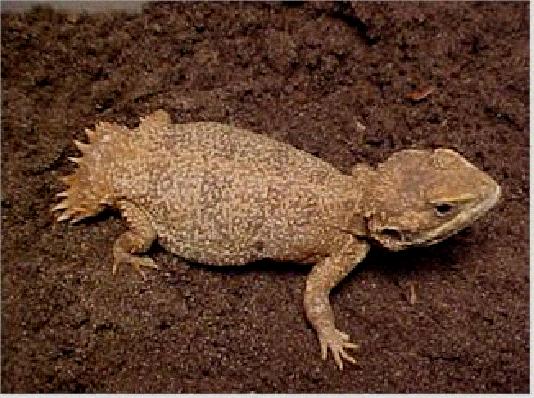NSHP stands for nutritional secondary hyperparathyroidism and is a metabolic disorder common in pet lizards. It is always due to poor husbandry practices. A bearded dragon is a beginner reptile and is always subjected to a pet owner’s beginner’s mistakes. It’s important to understand what NSHP is, how to treat it, what to expect, and how to keep up with a pet with this condition.
How to tell if your bearded dragon has NSHP
You can tell that your dragon has NSHP when you see weakness, constipation, and reduced activity. If your dragon cannot move it is legs or its legs have stopped working, then suspect NSHP but some illnesses may also lead to changes in movement. It may also indicate that your dog has an impaction and may be resolved by bathing your dog. NSHP signs are different.
Lizards affected by NSHP will have weak bony structures and thus may show signs like muscle twitching, seizure-like activity, tremors that are uncontrolled, paralysis, bone deformities, legs that are abnormally positioned, fractured bones especially the spine, legs and tail that have stopped working and a soft to the rubber-like jaw.
NSHP can lead to other conditions like fecal impaction. There is a pain, dehydration, fecal impaction, and pelvic bone problems and deformities in a lizard with NSHP. All these problems will contribute to the lizard’s legs to stop moving or working.
Causes and how to prevent NSHP

NSHP is a metabolic disorder and is mostly due to poor husbandry. It is a life-threatening condition that is preventable by the use of proper husbandry and correct feeding practices. When diagnosed early, this can be treated successfully.
Once the body has sensed that there is an imbalance of calcium in the blood, it will automatically balance out the levels by taking calcium from its reserves, which are inside the bone. So at very low calcium levels, the body is using its bones to cope. This is what happens to lizards with NSHP.
NSHP is a painful condition and can be due to many factors. The first one is a diet low in calcium to phosphate ratio. Another reason is low calcium or vitamin D3. Our body needs vitamin D3, which is found in sunlight to use calcium. Other possible causes of NSHP are poor levels of light exposure, poor tank temperatures, a high-fat diet, and excessive amounts of oxalates in the diet which impedes the absorption of calcium in the body.
To prevent NSHP, take time to understand the ideal lighting needed by bearded dragons. Create a habitat that has proper lighting, humidity, heating, and accessories. Proper enclosure set up will improve the well-being of your pet bearded dragon.
Use UVB bulbs on your reptile lamp and replace this according to the manufacturer’s instructions. Vitamin D3 is generated by the body as a response to exposure to natural light or sunlight. It is a vitamin that helps the body use calcium. UVB bulbs mimic the intensity of natural light and need replacing annually. But despite these efficient lamps, exposure to natural sunlight is still the best way to supply the body with vitamin D3.
Getting natural sunlight without any barrier at least once a week can significantly improve your lizard’s vitamin D3 levels. You can create an outdoor enclosure for your pet and leave it there when the weather is mild and sunny or place your reptile enclosure near an open window if an outdoor enclosure is not available.
Eating the correct diet is also one way to improve vitamin D3 levels. A balanced diet with calcium and phosphorous is important. Feed your pet dark leafy greens dusted with commercially-prepared calcium supplements is one way to boost calcium levels.
Use gut-loading as a way to deliver basic nutrients, especially calcium and vitamin D3, to your pet dragon. These nutrients must be fed to your pet weekly, along with providing a nutritious, complete diet. And aside from improving humidity, proper tank temperature may also help lizards improve digestion.
MBD is preventable through correct care of bearded dragons. If you think that your bearded dragon is affected by MBD or NHSP, consult a reptile specialist or a vet for early tests and diagnostic exams. Most cases that are discovered early are treatable, but cases that are discovered much later can be fatal.
What to do if your bearded dragon has NSHP
If you think that your bearded dragon has NSHP, contact your vet and make an appointment. NSHP and MBD require immediate medical attention. When handling your pet, use extreme care because your pet is likely to break his bones if you’re not careful. Handle your pet only when necessary.
Take note that NSHP is very painful, and the slightest twitch, twist, or bump can cause a fracture or worse. If you are to take your pet to the vet, transport it in a safe and secure container. A container similar to a small dog or cat’s container would do well. Place soft towels inside the container to support your pet. To place your pet inside, use both hands to handle it.
How to treat NSHP

Most bearded dragons and other lizards with NSHP receive treatment later in the disease, and this often results in terrible consequences. If your pet has a similar condition, it may be too late for your pet. Therefore, you must consult your vet as the first sign of any sickness or illness in your pet.
Pet bearded dragons that suffer from NSHP may mask signs because the lizard’s body attempts to correct calcium levels by sucking up bone stores in the body. The treatment is often prolonged and can take up to several months to complete. Treatment is also very expensive, especially if the animal is too affected. Treatment for NSHP often turns to failure, and the pet may die. Prevention is therefore very important.
How a vet treats NSHP in bearded dragons
Vets will initially diagnose NSHP using a physical exam and getting a detailed medical history of the pet. Usually, this is done quickly in the examination room and is not expensive. Depending on how bad the animal’s condition is, x-rays, blood works, and other advanced imaging tests may be advised. Most of the time, results are unable to diagnose the condition 100% of the time. X-rays are needed in detecting any fracture and is a good basic test to create baseline data for measuring the lizard’s recovery time. After all the tests are over, the vet will be able to make a good diagnosis of your pet’s condition.
Sometimes, you may doubt what the vet tells you, especially if the condition is too severe. Consulting another vet is a good idea, but it will only delay your pet’s treatment. But it does not mean that you can’t get a second opinion about your pet’s condition. You can always get a second opinion but do weigh the options, especially how badly in shape your pet bearded dragon is.
Available treatments

The treatment of NSHP depends on the severity of the disease. Supplements with calcium and D3 are mostly indicated. Supplements are in the form of oral preparations or injectable preparations. There are no home remedies that can help cure NSHP, but you can use some time-tested remedies to fight symptoms.
Give your pet a nice warm water bath to reduce constipation and treat dehydration. Fluid therapy and feeding are part of the care of lizards with NSHP. It is also important that after treatment, your pet may start to feel better and even look better. But despite this, you may still need to take your pet to the vet for further treatments.
The medical treatment of NSHP includes a detailed assessment of your pet’s enclosure in your home, and this includes the tank’s temperature, light and light exposure, potential hazards, and many more. Consider removing any threats to your pet’s safety and well-being including removing obstacles to movements like removing rocks, perches, tree branches and more.
Consider that not all vets can treat exotic animals like a bearded dragon. It’s best to take your pet to a reptile specialist to get a more appropriate, more effective treatment. Look for an exotics vet, but it’s not always the first one that works for you and your pet. If you are unsure about the quality of care your pet receives, by all means, look for another vet.
Vet costs for the treatment of NSHP and MBD can rise, especially when your vet’s condition is turning for the worse. But don’t let the costs affect pet care. Ask for a cost estimate and look for a vet that can offer good quality care at the most reasonable rates. The two most important phases of treatment of any illness are prevention and early detection. Do not hesitate to take your vet for anything, especially problems with movement, gastrointestinal conditions, and more. This period makes all the difference in saving your pet’s bearded dragon’s life.



